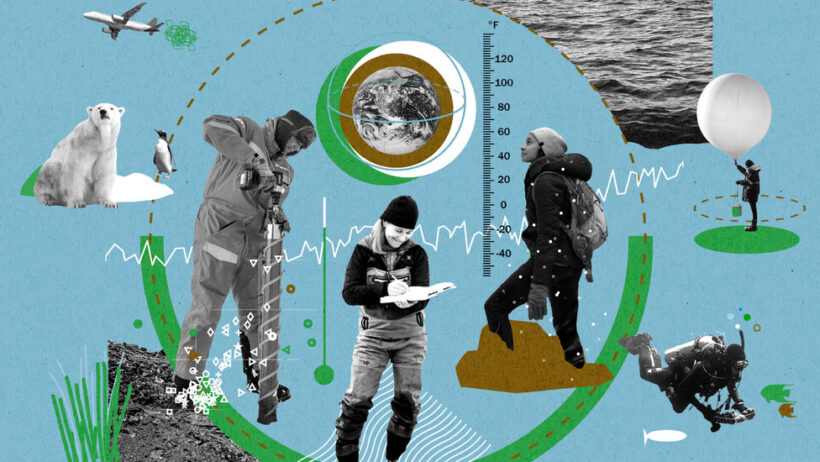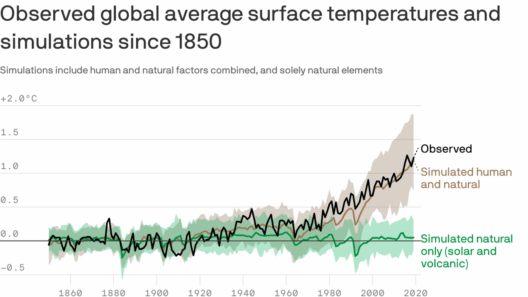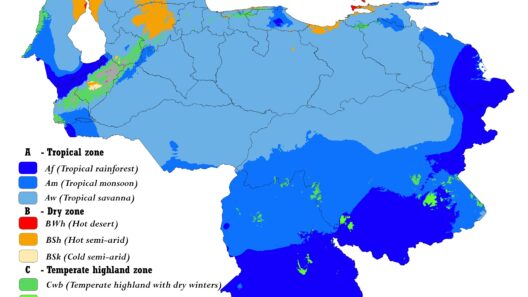Climate change is the elephant in the room that none can ignore. It looms large, casting long shadows over ecosystems, economies, and even our very societies. Understanding why this phenomenon occurs requires delving into a multifaceted tapestry of scientific principles, human activities, and natural processes. Let us embark on an exploration to uncover the truth behind climate change, examining its causes, consequences, and the urgent call to action.
At its core, climate change is driven by an intricate interplay of natural elements and anthropogenic influences. The Earth’s climate system is multifarious, comprising the atmosphere, hydrosphere, cryosphere, lithosphere, and biosphere. Changes in any of these spheres can ripple across the entire system, engendering both gradual shifts and abrupt changes. Natural phenomena such as volcanic eruptions, solar radiation fluctuations, and ocean currents have historically altered the climate, but the contemporary surge in average global temperatures can be primarily attributed to human activity.
The industrial revolution heralded an era wherein mankind unleashed unprecedented levels of carbon dioxide and other greenhouse gases (GHGs) into the atmosphere. These gases, akin to a thick blanket wrapped around the planet, trap heat from the sun, leading to a phenomenon known as the greenhouse effect. This effect, while essential for maintaining a habitable Earth, has been exaggerated by artificial emissions. The most significant offenders include carbon dioxide (CO2), methane (CH4), and nitrous oxide (N2O), all of which stem predominantly from burning fossil fuels, deforestation, and agriculture.
Fossil fuels, the vestiges of ancient organic matter, serve as the primary energy source for modern civilization. They power our vehicles, heat our homes, and generate our electricity. However, the combustion of coal, oil, and natural gas emits copious amounts of CO2—around 33 billion tons annually. The staggering reliance on these energy sources creates a vicious cycle, where climate change exacerbates the conditions for energy crises and environmental degradation.
Deforestation, often referred to as the lungs of the Earth, plays a crucial role in the carbon cycle. Trees absorb CO2, acting as natural carbon sinks. When forests are cleared for agriculture, urban development, or logging, not only is this vital carbon capture mechanism dismantled, but the act of cutting down trees releases stored carbon back into the atmosphere. The Amazon rainforest, often dubbed the “Earth’s lungs,” is currently under threat as vast expanses fall victim to exploitation. This tragic loss emphasizes the interconnectedness of ecosystems and highlights the urgent need for conservation efforts.
Furthermore, agricultural practices contribute substantially to climate change. The use of synthetic fertilizers and the rearing of livestock produce high levels of nitrous oxide and methane, respectively. Livestock farming alone is estimated to account for 14.5% of global greenhouse gas emissions, primarily due to enteric fermentation—an enchanting yet concerning digestive process in ruminants that generates methane. As the demand for meat rises globally, so too does the pressure on the climate, prompting a reevaluation of dietary trends.
Yet, climate change impacts are not merely an abstract concern. They manifest in tangible, often devastating ways. Extreme weather events, including hurricanes, heatwaves, droughts, and floods, have become increasingly frequent and severe. These occurrences not only disrupt livelihoods but also threaten biodiversity and exacerbate social inequities. Vulnerable communities, often those least responsible for GHG emissions, bear the brunt of these consequences, leading to a cascade of humanitarian crises.
The melting of polar ice caps serves as a striking metaphor for the fragility of our climate. As glaciers and ice sheets succumb to rising temperatures, sea levels rise, poised to engulf coastal cities and displace millions of inhabitants. The Arctic, once symbolizing the purity of untouched nature, now embodies the stark reality of climate change with its loss of habitats for species like polar bears and seals. This transformation raises profound questions about the ethics of our energy consumption and our role as stewards of the planet.
In the tapestry of climate change, it is critical to weave threads of hope and resilience. There exists a burgeoning movement towards sustainable practices and renewable energy sources. Wind, solar, and hydropower are emerging as flavorful alternatives to fossil fuels, offering the promise of cleaner energy that does not compromise our planet’s integrity. Additionally, reforestation initiatives and advances in agricultural technology are paving the way for a more sustainable interface with our environment.
The call for climate action is not just a plea; it is an imperative. With scientific consensus underscoring the urgency for change, it is disheartening that political inertia often stymies progress. The transition to a low-carbon economy requires not merely cooperation among nations but also a profound cultural shift towards sustainability. The collective voice of the populace can rally governments and corporations to prioritize climate action over short-term gains.
In conclusion, uncovering the truth behind climate change reveals a complex narrative of interrelated causes and effects, steeped in the dualistic nature of human progress. As we stand at this critical juncture, the onus lies with us to advocate for change, to forge a new path that honors both our ambitions and our planet’s limits. The future is not yet written—it is malleable, shaped by our collective actions today. Embrace the challenge, for the stakes are unparalleled, and the time for decisive action is now.







